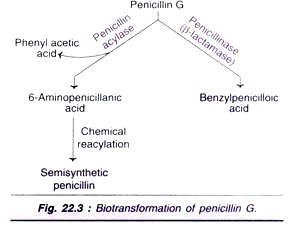The following points highlight the two types of pathways of water passage from root hair to xylem inside the root. The types are: 1. Apoplast Pathway 2. Symplast Pathway.
Type # 1. Apoplast Pathway:
Here water passes from root hair to xylem through the walls of intervening cells without crossing any membrane or cytoplasm. The pathway provides the least resistance to movement of water. However, it is interrupted by the presence of impermeable lignosuberin casparian strips in the walls of endodermal cells.
Type # 2. Symplast Pathway:
Water passes from cell to cell through their protoplasm. It does not enter cell vacuoles. The cytoplasm of the adjacent cells are connected through bridges called plasmodesmata.
For entering into symplast, water has to pass through plasma lemma (cell membrane) at-least at one place. It is also called trans membrane pathway. Symplastic movement is aided by cytoplasmic streaming of individual cells. It is, however, slower than apoplastic movements.
Both the pathways are involved in the movement across the root. Water flows via apoplast in the cortex. It enters the symplast pathway in the endodermis where walls are impervious to flow of water due to the presence of casparian strips.
Here, only plasmodesmata are helpful to allow passage of water into pericycle from where it enters the xylem. Mineral nutrients also have the same pathway as that of water. However, their absorption and passage into symplast mostly occurs through active absorption. Once inside the xylem, the movement is purely along the pressure gradient.
Mycorrhizal Water Absorption:
In mycorrhiza a large number of fungal hyphae are associated with the young roots. The fungal hyphae extend to sufficient distance into the soil. They have a large surface area. The hyphae are specialised to absorb both water and minerals.
The two are handed over to the root which provides the fungus with both sugars and N-containing compounds. Mycorrhizal association between fungus and root is often obligate. Pinus and orchid seeds do not germinate and establish themselves into plants without mycorrhizal association.

